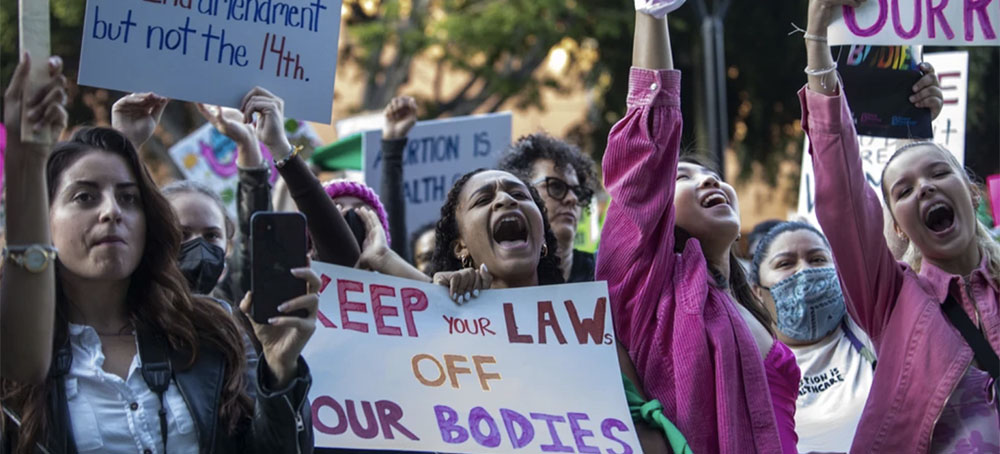Live on the homepage now!
Reader Supported News
For years, the ever-increasing militarization of US police forces has been cast by its defenders as an indispensable tool for dealing with large-scale violence and mass-casualty events. Since the Uvalde massacre last month, that rationale lies in tatters.
“A principal function of the police is to respond to the public safety threats that face our communities,” said Jim Bueermann, president of the Police Foundation. “Adequate and updated equipment is a necessity to keep both officers and our citizens safe. . . . I urge you to consider the program’s local public safety benefits.”
The executive director of another police association, the National Tactical Officers Association, explicitly cited the 1999 Columbine shooting as the reason the program had to continue.
“Minutes and even seconds count in an active shooter situation,” he said. “Lives are at risk if immediate police actions do not occur quickly and effectively. No longer can police departments wait for specialized units to respond to active shooter incidents.”
The hearings didn’t come to much. Barack Obama signed a landmark but flawed executive order restricting the weapons transfers, which Donald Trump quickly rescinded. “Much of the equipment provided through the 1033 program is entirely defensive in nature . . . that protect officers in active shooter scenarios and other dangerous situations,” read Trump’s proposal.
“Law enforcement authorities need such equipment in order to protect the public — for instance, during terrorist attacks,” explained the Heritage Foundation upon the order’s repeal.
“The police should have the weapons that they need to match criminals who have access to high-powered weapons,” said torture fan John Yoo over at the American Enterprise Institute. “Under-arming the police, who have a difficult job where they must make split-second decisions about life and death, is not going to help reduce violent crime in our inner cities.”
The supporters of police militarization won out. In a country plagued by terrorist threats and disturbed shooters, it was simply too risky not to have a police force armed to the teeth, ready to subdue whatever heavily armed attacker threatened the lives of Americans. So thousands of pieces of equipment worth millions of dollars continued to flow out from the Pentagon in the years after.
It all starts to look and sound pretty silly, though, in the wake of yet another horrendous mass shooting, this time at Robb Elementary in Uvalde, Texas, which left nineteen kids and two teachers dead. As we know all too well now, the Uvalde police not only didn’t stop the eighteen-year-old gunman during the twelve minutes that he was outside the school before he started killing; once he started killing kids inside, officers simply stayed where they were, asked the heavily armed tactical police not to charge in, and even restrained the distraught parents who were begging them to go in and save their kids, or at least let them try and do it themselves. As a local official explained, those officers didn’t go in because “they could’ve been shot, they could’ve been killed.”
In late May, when the mass shooting of the week was the racist rampage in Buffalo, I asked: What’s the point of letting various government agencies snoop through our emails, call records, and other private information if they can’t even use it to detect and prevent one of these mass murders? This week, tragically, a similar question must be asked: What’s the point of loading local police forces up with menacing war-fighting equipment if they’re still going to be fatally intimidated by one teenager with an assault rifle?
The answer, sadly, may be more or less the same. Like the various forms of privacy-shredding mass surveillance we’ve been told to accept as the price of physical security, these military transfers ultimately may not actually be that helpful for stopping what we’re told they exist to stop — namely, terrorist attacks, mass shootings, and the like.
What they have proven remarkably useful for, though, is to intimidate and repress protesters and angry local populations, and so help quell and control civil unrest, especially when that unrest takes the form of angry protests demanding an end to the nonstop onslaught of police violence that has especially devastated black communities. Trump’s attorney general, Jeff Sessions, suggested as much in his speech on the repeal of Obama’s executive order, charging it would “send a strong message that we will not allow criminal activity, violence and lawlessness to become the new normal.”
Critics of police militarization have been warning about this for a while: that maybe the most useful thing about all this military equipment isn’t so much to stop terrorism as it is to keep an unruly public under the government’s thumb, as is the case with militarized security forces in other countries. Maybe there was a time when this hypothesis could be easily dismissed. But seeing the fully kitted-out warrior cops of Uvalde standing by as an eighteen-year-old shot little kids to death makes it harder to do so.
Local police showed none of the same reluctance to act when protests erupted in Ferguson eight years ago, facing down unarmed protesters with weapons straight out of a foreign war zone, from tanks and armored vehicles to M4 rifles and shotguns. And I don’t remember any similar hesitancy from the federal police forces I saw when I visited Portland in summer 2020, materializing like space invaders to shoot tear gas canisters and pepper shot into crowds of moms and teachers. But in those cases, they were facing protesters armed with fireworks and leaf blowers, not assault rifles.
It’s also in stark contrast to the long-standing police practice of “no-knock raids,” where officers suddenly kick down a person’s door and terrorize whoever’s inside, guns drawn, killing their pets or the unarmed person inside for the sake of seizing a small amount of drugs — or, as in the case of Breonna Taylor, terrifying the bewildered inhabitants to such an extent that they provoke a deadly gunfight. Perhaps, without the element of surprise, or when you know the person inside is definitely dangerously armed, all that armor and weaponry isn’t quite so effective.
There’s no doubt someone will look at this horror and say that this proves the need to only militarize police and schools further. But that would be a disaster. Not only were police and tactical officers heavily armed and armored as they stood by and let this happen, not only did Uvalde have a SWAT team ostensibly for this very scenario, but the school district had doubled its security budget before the attack.
The way to address this is through the kind of gun control measures that exist in every other country — places that, coincidentally, don’t suffer constant mass shootings — and by attacking the root causes of what drives so many disturbed individuals — in this case a kid, no less — to the point of doing something unspeakable. More militarized police and schools will just mean more brutality and criminalization of students.
And it’ll also mean more brutalization of local communities, which bear the brunt of all this military equipment flowing to law enforcement. The parents of Uvalde may be furious at the police, but they should take care to keep their rage off the streets. After all, like so many other aggrieved communities, then they might really see what the full force of their militarized police can do.
 Demonstrators during an abortion-rights protest in Los Angeles on Tuesday, May 3, 2022. (photo: Jill Connelly/Bloomberg/Getty Images)
Demonstrators during an abortion-rights protest in Los Angeles on Tuesday, May 3, 2022. (photo: Jill Connelly/Bloomberg/Getty Images)
Legalized abortion in some form is widely supported, but gerrymandered districts allow politicians to push extreme measures through
It was a move that should have carried considerable political risk in Ohio, a state closely divided between Democrats and Republicans. There wasn’t widespread support for the bill – polling showed public opinion was nearly evenly split over the bill (a poll after the bill was passed showed a majority opposed it), John Kasich, a previous Republican governor, had twice vetoed the bill, saying it was unconstitutional, and it had stalled in the legislature for years.
But Ohio’s governor, Mike DeWine, a Republican, nonetheless signed the bill into law the next day. And the following fall, when the politicians who passed the measure came up for re-election, Republicans didn’t lose any seats in the state legislature. In fact, they expanded their majority.
Ohio offers a case study of how US politicians enact extreme abortion measures that don’t align with voters’ views but face little accountability at the polls – an issue even more at stake this month as the supreme court is on the verge of issuing a decision that will probably overturn Roe v Wade, the landmark 1973 decision establishing a constitutional right to an abortion. In Ohio and elsewhere, politicians are protected by their ability to draw their own political districts every 10 years, distorting them in such a way as to virtually guarantee their re-election. Republicans drew the lines in Ohio in 2011 and have held a supermajority in the state legislature ever since. “We can kind of do what we want,” Matt Huffman, the top Republican in the Ohio senate, told the Columbus Dispatch recently.
In a leaked draft opinion overturning Roe, Justice Samuel Alito wrote that disputes over abortion should be resolved through the political process. “The permissibility of abortion, and the limitations, upon it, are to be resolved like most important questions in our democracy: by citizens trying to persuade one another and then voting,” Alito wrote, quoting the late Justice Antonin Scalia.
But as it urges returning abortion to the political sphere, the supreme court has sanctioned a manipulation of the political process that makes it nearly impossible for Ohioans and voters in other states to make their voices heard on abortion. In 2019, Alito and four of the court’s conservative justices said federal courts could not do anything to police partisan gerrymandering, giving lawmakers in Ohio and elsewhere more freedom to gerrymander their districts.
That kind of gerrymandering will probably serve as an invisible, virtually impenetrable fortress that will allow lawmakers across the US to continue to push extreme abortion measures that are unsupported by the public. Although public attitudes about abortion can be complex, the vast majority do not support overturning Roe v Wade and a majority supports legalized abortion in some form. State lawmakers who have pushed measures criminalizing abortion and outlawing it entirely have ignored those attitudes.
“They are different strands of the same braid. We don’t have those restrictions without the gerrymandering,” said Kellie Copeland, the executive director of Pro-Choice Ohio, a group that works to protect abortion access in the state.
When Ohio was considering the six-week abortion ban, Copeland said, her organization facilitated a “parade of witnesses” – medical professionals, women who had abortions, religious leaders – to give emotional testimony to the legislature. Many lawmakers didn’t stick around to listen. “They don’t care. And they don’t care because they know they’re untouchable because of gerrymandering,” she said.
It’s a problem that exists beyond Ohio. The vast majority of Americans believe abortion should be legal in at least some circumstances, but state lawmakers continue to offer a blitz of increasingly extreme restrictions on abortion. Republicans control far more state legislative chambers than Democrats do and only about 17.5% of state legislative districts are expected to be competitive over the next decade. Very few chambers are expected to flip partisan control. In Ohio, Republicans have once again come up with a state legislative map distorted to their advantage and have openly defied the state supreme court’s orders to come up with a fairer map.
Extreme restrictions with extreme consequences
In 2010, Kasich had ousted an incumbent Democrat and Republicans flipped control of the Ohio house as part of a nationwide Republican effort aimed at winning state legislative chambers to control the redistricting process. Armed with complete redistricting power, Ohio Republicans drew new districts that allowed them to win a supermajority in the state legislature throughout the last decade, even as Barack Obama carried the state in 2008 and 2012.
A wave of new restrictions on abortion restrictions began to flow. In 2012, the state enacted a new law banning abortions after a fetus was viable, except in cases of medical emergency, and requiring viability testing at 20 weeks (three to four weeks before the accepted medical definition of viability). The next year, Ohio lawmakers tucked a number of restrictions into a budget bill, including a hugely consequential measure that prevented abortion clinics from entering into required patient-transfer agreements with taxpayer-funded hospitals. The state went on to prohibit certain government money from going to Planned Parenthood, ban abortion at 20 weeks post-fertilization outright and, in 2019, passed the six-week abortion ban.
“Throughout the ’80s, ’90s, early 2000s, there were occasional laws that would tinker with the informed consent requirement for an abortion or tinker around the edges with minors access to abortion and things like that,” said Jessie Hill, a law professor at Case Western Univerity. “We really started to see an uptick in abortion restrictions after 2010, or 2011, the last time the redistricting took effect in Ohio. It’s been since then, just sort of increasingly extreme restrictions.”
Those restrictions produced extreme consequences. Between 2011 and 2015, seven of the state’s 16 abortion clinics either closed or curtailed their operations (six full-service clinics remain open today with three additional clinics providing medication abortion services). A complete ban on abortion in the state could increase the average distance a woman has to travel in Ohio to an abortion clinic from an average of 26 miles to as much as 269 miles in a worst-case scenario, according to one recent study.
It’s a burden that significantly harms those in rural areas, who have seen clinics in their counties close and who will have to take more time off work to travel.
“It’s kind of death by a thousand cuts,” said Sri Thakkilapati, the interim executive director of PreTerm, an abortion clinic in Cleveland. “Maybe any one or two of these things you could overcome, but all together it becomes a really burdensome process,”
As the supreme court weighs overturning Roe v Wade, Ohio is now considering a virtually complete ban on abortion. Such a ban would mean that those seeking an abortion will have to pay “exorbitant amounts of income” to travel to obtain an abortion out of state, said Danielle Bessett, a professor at the University of Cincinnati who studies abortion access. “People who are not gonna be able to afford that travel … are then going to try and self-source abortion care at home. And we’ll probably see lots of inequality in how people are prosecuted and arrested for that,” she said.
And lastly, she said, there will be those who don’t try either of those and are forced to carry their pregnancy to term. “There are equity issues there, too, with Black women having the highest rate of maternal mortality,” she said.
As lawmakers have pushed these severe restrictions, they have consistently remained out of line with what most Ohioans believe. Polls have consistently shown that a majority of Ohio voters support some form of legalized abortion, while a minority believes it should be illegal.
“Those who are anti-abortion and claim a faith tradition, they don’t speak for me. They don’t represent the countless folks who are faithfully pro-choice. Same thing with our elected leaders. They don’t represent who we are and what we believe in our communities,” said Elaina Ramsey, the executive director of Faith Choice Ohio, which works to protect abortion access.
Thakkilapati agrees. “It’s frustrating. In some ways it’s hopeful that people do think that abortion should be a right and should exist for people in Ohio. It’s helpful to know that there are more of us. But in some ways it’s very disheartening,” she said. “It feels like it’s not gonna make a difference.”
 President Volodymyr Zelenskyy of Ukraine. (photo: Yahoo! News)
President Volodymyr Zelenskyy of Ukraine. (photo: Yahoo! News)
The president pushed companies that have not shut down operations in Russia to leave the country and instead set up in Ukraine. He also warned of widespread famine if Russia does not lift a blockade of Ukrainian ports that has prevented the export of grains.
Late Tuesday night, Zelenskyy warned that this coming winter will be “the most difficult” for Ukraine since its independence from the Soviet Union. He said the country won’t sell gas and coal abroad.
Meanwhile, a report suggested that more than 1,000 Ukrainian fighters captured in Mariupol have been sent to Russia for an “investigation.” There have been widespread concerns over the fate of soldiers captured in the southern port city after Russia seized it in late May.
 Democratic congressional candidate Jessica Cisneros speaks to the media before a rally in San Antonio in February. (photo: Eric Gay/AP)
Democratic congressional candidate Jessica Cisneros speaks to the media before a rally in San Antonio in February. (photo: Eric Gay/AP)
Cuellar was leading Cisneros by 187 votes, or 0.4 percentage points, out of 45,429 ballots counted as of Monday night, according to an Associated Press count. The AP will not declare a winner until the recount is completed.
“Our movement was never just about one politician — it was about taking on an unjust system that rewards corruption and corporate profits at the expense of the needs of working people,” Cisneros said in a statement to the Texas Tribune that she retweeted to her followers. “Our community isn't done fighting, we are filing for a recount."
She added, “I owe it to our community to see this through to the end.”
Cisneros, a 29-year-old immigration attorney, forced the runoff in March after she came within 1,000 votes of Cuellar. She also ran against him in 2020, losing by 4 percentage points. She is a former intern in his Washington office.
Cuellar, one of the last anti-abortion Democrats in Congress, was endorsed by House Speaker Nancy Pelosi, House Majority Whip Jim Clyburn and others. Cisneros had the backing of Vermont Sen. Bernie Sanders and New York Rep. Alexandria Ocasio-Cortez.
The winner of Texas’ race will face Cassy Garcia, who won the Republican runoff for the seat.
 The U.S. gymnasts, from left, Simone Biles, McKayla Maroney, Aly Raisman and Maggie Nichols testifying on Capitol Hill in September. The four are among the more than 90 plaintiffs in the suits. (photo: Saul Loeb/NYT)
The U.S. gymnasts, from left, Simone Biles, McKayla Maroney, Aly Raisman and Maggie Nichols testifying on Capitol Hill in September. The four are among the more than 90 plaintiffs in the suits. (photo: Saul Loeb/NYT)
The plaintiffs say Lawrence Nassar abused them after the bureau failed to act. The suits come after the Justice Department declined to prosecute the agents accused of bungling the inquiry.
The lawsuits come two weeks after the Justice Department decided not to prosecute two former F.B.I. agents accused of bungling the bureau’s 2015 investigation into Mr. Nassar, allowing him to assault girls for more than a year before Michigan authorities arrested him. The agents were accused by the Justice Department’s own watchdog of making false statements about the matter.
The plaintiffs include the Olympic gymnastics gold medalists Simone Biles, Aly Raisman and McKayla Maroney and the national gymnastics medalist Maggie Nichols, as well as the former University of Michigan gymnast Samantha Roy and the former gymnast Kaylee Lorincz, who now works as an advocate for sexual assault victims.
“My fellow survivors and I were betrayed by every institution that was supposed to protect us — the U.S. Olympic Committee, U.S.A. Gymnastics, the F.B.I. and now the Department of Justice,” Ms. Maroney said in a statement. “It is clear that the only path to justice and healing is through the legal process,” she added.
The plaintiffs are seeking different amounts in damages, but their total claims will exceed $1 billion, their lawyer, John C. Manly, said in a statement.
Mr. Nassar, who was sentenced to up to 175 years in prison, was accused of molesting hundreds of girls and women, including many members of the 2012 and 2016 U.S. Olympic women’s gymnastics teams.
The F.B.I. field office in Indianapolis received evidence of his crimes in 2015. Agents proceeded to interview gymnasts including Ms. Maroney, who provided detailed testimony. Ultimately they took no action to ramp up the investigation or stop Mr. Nassar.
The Justice Department’s inspector general later accused W. Jay Abbott, who was in charge of the bureau’s Indianapolis field office, and Michael Langeman, an agent in that office, of making false statements to investigators who were looking into their actions.
In a report released last summer, the inspector general said Mr. Abbott made false statements “to minimize errors made by the Indianapolis field office in connection with the handling of the Nassar allegations.”
He also said Mr. Abbott was talking to U.S.A. Gymnastics about potential job opportunities while he was asking the organization about the allegations against Mr. Nassar, actions that violated F.B.I. policy.
The inspector general’s report said the F.B.I. mishandled witness interviews and did not share credible information regarding abuse with relevant authorities.
It also found that 70 or more athletes were sexually abused by Mr. Nassar between July 2015, when U.S.A. Gymnastics first reported allegations against Mr. Nassar to the F.B.I.’s Indianapolis field office, and August 2016, when the Michigan State University Police Department received a separate complaint.
The women suing the F.B.I. say that they were abused during this period.
“If the F.B.I. had simply done its job, Nassar would have been stopped before he ever had the chance to abuse hundreds of girls, including me,” Ms. Roy said in a statement.
 Sophy Saronge. (photo: BBC)
Sophy Saronge. (photo: BBC)
The trained nutritionist says she had no choice as her family needed the money.
"I had to go back to work for our survival," she explains.
But she is surrounded by advice that she made the wrong choice for her daughter.
Kenya's health authority recommends that babies should be fed only breast milk for the first six months. Also, the government has made it mandatory for formula milk manufacturers to mention both in advertising campaigns and on products that breastmilk is recommended.
The World Health Organization (WHO) says that giving a baby only breast milk for six months "offers a powerful line of defence against all forms of child malnutrition". It says it also acts as a baby's "first vaccine, protecting them against many common childhood illnesses".
Overall, Kenya has high breastfeeding rates, with nearly all babies breastfed in the immediate period after birth. But only just over 60% of babies are exclusively breastfed for a full six months, according to data published by the International Breastfeeding Journal.
Time off but no pay
"I had to give my daughter cow's milk despite being a nutritionist and knowing well that her system could not easily digest it," Ms Saronge says.
Infant formula - usually made from cow's milk that has been treated to make it more suitable for babies - was unaffordable for her, with the price having risen since the government reintroduced a sales tax of 16% on the product in 2021.
To make matters worse, Ms Saronge says the three months she did take off after giving birth were unpaid because, like many other Kenyans, she did not have a proper employment contract that would have legally entitled her to receive maternity pay.
Others are more fortunate.
With her husband earning a good income, Caroline Wairimu was able to quit her marketing job when she gave birth to twins.
"The best way to encourage mothers to exclusively breastfeed for six months is to give them six months paid maternity. Most give up after three months because balancing work and motherhood is hard," she says.
Currently, new mothers, who have an employment contract, are entitled to three months paid maternity leave.
Women's rights activist Ruth Mumbi says the government is not concerned about women's issues and has therefore not shown an interest in giving longer maternity leave.
The labour ministry did not respond to the BBC's request for comment.
But the health ministry says significant progress has been made by giving mothers three months fully paid maternity leave. The government though is not at the moment considering extending the period through further amendments to labour legislation.
Some analysts believe the authorities are facing strong resistance from employers - President Uhuru Kenyatta failed to sign into law a bill passed in parliament in 2016, making it mandatory for companies to provide breastfeeding rooms. The bill was reintroduced in 2019, but has still not been approved by parliament.
But the director of nutrition at the health ministry, Veronica Kirogo, says the government is committed to the proposed legislation, with many government departments and 50 private sector companies having already set up breastfeeding rooms.
This allows mothers to either have someone bring their baby for breastfeeding or expressing breastmilk and storing it in a refrigerator.
Left daughter with neighbour
Evelyne Mueni, a single mother who relies on menial jobs for her income, says she had to resume work after just a month.
"I had to leave my daughter with the neighbour who gave her cow's milk and porridge while I hand-washed clothes and cleaned people's houses so as to afford my food and rent," she says.
Ms Kirogo says mothers working in the informal sector are encouraged to continue expressing breast milk by hand and letting it sit in cold water for up to eight hours so that it does not go to waste.
But Ms Mueni says it was easier for her to buy cow's milk as she was unable to express enough milk to satisfy her baby.
Neonatal specialist Dr Moses Lango says "early weaning is not recommended from a public health perspective because breast milk is sufficient for babies for the first six months".
"From a medical perspective, doctors allow early weaning for various reasons but only from about the age of four-and-a-half months, when the baby shows signs of wanting to feed by opening their mouth when offered food and is able to swallow," he adds.
There is a continent-wide push to encourage mothers to choose breastfeeding.
The WHO has been calling for aggressive advertising of infant formula to stop after a recent report published found that manufacturers were purchasing the data about new parents from apps and using the information to target them.
Like Kenya, Liberia's parliament has passed a law that regulates the advertising and labelling of breast milk substitutes to encourage breastfeeding.
Namibia recently increased monthly state benefits paid to women during maternity leave to a minimum of $20 (£16) and a maximum of $1,000 as an incentive for mothers to stay at home and breastfeed for longer periods.
Maternity leave in Namibia is three months - which includes one month in the final stages of pregnancy - and only mothers who have been employed for a minimum of six months qualify for it as well as the state benefits.
"Breastfeeding improves IQ, school attendance, and is associated with higher income in adult life," the WHO says.
While there is clearly an awareness of the benefits some countries are still grappling with how to implement the policies that will improve the health of the nation.
 A chinstrap penguin colony in front of a glacier on Elephant Island in Antarctica. (photo: Christian Aslund/Greenpeace)
A chinstrap penguin colony in front of a glacier on Elephant Island in Antarctica. (photo: Christian Aslund/Greenpeace)
New research highlights the scale of plastic pollution and its effects in the most remote region of the world.
Alex Aves, a student at the University of Canterbury in New Zealand, collected snow samples from 19 sites across the Ross Ice Shelf in Antarctica in 2019 and said she was shocked to find microplastics – any piece of plastic smaller than five millimetres in length – in every sample.
“It’s incredibly sad but finding microplastics in fresh Antarctic snow highlights the extent of plastic pollution into even the most remote regions of the world,” she said.
Her research, published on Wednesday in the science journal The Cryosphere, found an average of 29 microplastic particles per litre (about one quart) of melted snow.
Microplastics have previously been found inside fish in the deepest recesses of the ocean and inside Arctic ice, infiltrating the remotest and otherwise pristine regions of the planet, but not in freshly fallen snow.
The density of microplastics was nearly three times higher immediately next to the scientific bases on Ross Island, Scott Base, and McMurdo Station.
Of the 13 different types of plastic found, the most common was PET, which is often used to make soft drink bottles and clothing.
Microplastics may have travelled thousands of kilometres through the air, but it is equally likely the presence of humans in Antarctica established a microplastic “footprint”, the research found.
The research confirmed what scientists expected, Institute of Environmental Science and Research senior scientist Olga Panto said.
“It really is impossible for any organism to now avoid the impacts of human activity, similar to the way that all environments and organisms are impacted by human-driven climate change,” she was quoted as saying by the dpa news agency.
Reports underscore the need for joint action over the omnipresence of plastics pollution to avoid its effect.
Significant steps are needed to reduce the use and management of plastics, Panto said.
Global plastic waste
Plastic waste contributes to not only littering of the oceans, but also to the climate crisis – through emitting greenhouse gases as it breaks down – and it poses human health risks.
Since the 1950s, roughly 8.3 billion tonnes of plastic have been produced with more than 60 percent of that tossed into landfills, burned or dumped directly into rivers and oceans. Some 460 million tonnes of plastics were used in 2019, twice as much as 20 years earlier.
With current annual global production of plastic, global plastic waste is projected to triple by 2060, reported the Organisation for Economic Co-operation and Development (OECD) on Friday.
The OECD predicts this increase will be driven by economic and population growth. The largest increases are expected in emerging economies in sub-Saharan Africa and Asia.
In 2020, the Commonwealth Scientific and Industrial Research Organisation (CSIRO), Australia’s national science agency, estimated 14 million tonnes of harmful microplastics may be present at the bottom of the world’s deep oceans as a result of the pervasive use of plastic.
About 4 to 8 percent of annual global oil consumption is of plastic, and it is estimated that might reach 20 percent by 2050, according to the World Economic Forum.
Special Coverage: Ukraine, A Historic Resistance
READ MORE
Follow us on facebook and twitter!
PO Box 2043 / Citrus Heights, CA 95611


No comments:
Post a Comment
Note: Only a member of this blog may post a comment.